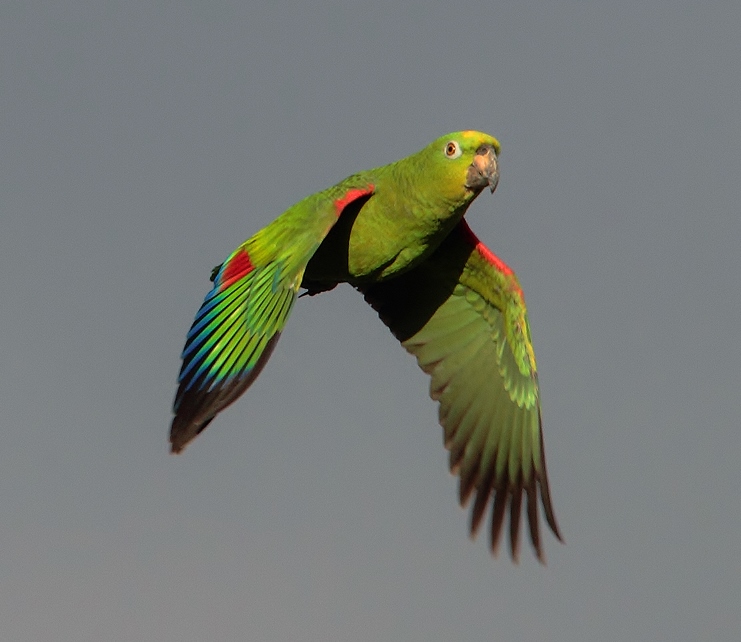 |
| Photo by Erick Houli (Flickr) |
Common name:
yellow-crowned amazon (en); papagaio-campeiro (pt); amazone à front jaune (fr); loro real amazónico (es); gelbscheitelamazone (de)
Taxonomy:
Order Psittaciformes
Family Psittacidae
Range:
This species is found from Panama south to central Bolivia and north-western Brazil as far south as Mato Grosso and Pará.
Size:
These birds are 31-38 cm long and weigh 380-560 g.
Habitat:
The yellow-crowned amazon is mostly found in rainforests and swamp forests, but also in degraded patches of former forests, deciduous woodlands, tall scrubland and agricultural areas. They are found from sea level up to an altitude of 850 m.
Diet:
They usually forage in small flock of up to 30 individuals, eating fruits, nuts, seeds, berries, blossoms and leaf buds. They often gather at clay licks.
Breeding:
Yellow-crowned amazons are monogamous. They breed in December-May and nest on a hollow in a tree or termite mound, where the female lays 2-4 eggs. She incubates the eggs alone for 24-28 days and the chicks are fed by both parents, fledging 8-9 weeks after hatching. They reach sexual maturity at 3 years of age. Each pair raises a single clutch per season.
Conservation:
IUCN status – LC (Least Concern)
This species has a very large breeding range and is described as common in at least parts of its range. The population is expected to suffer a small decline in the future, based on current models of Amazonian deforestation, but their tolerance of fragmented and degraded forests such minimize this decline.







